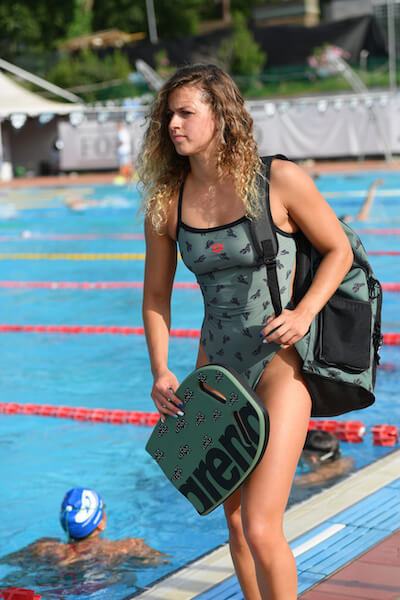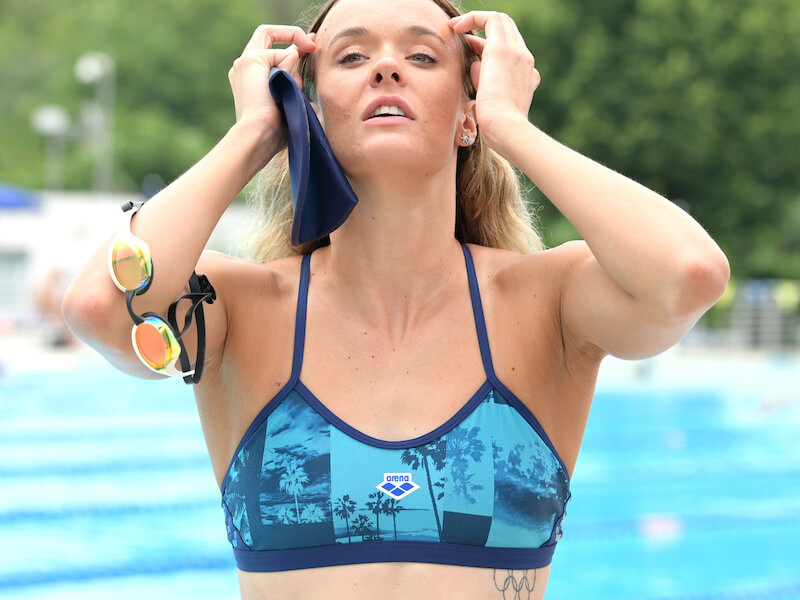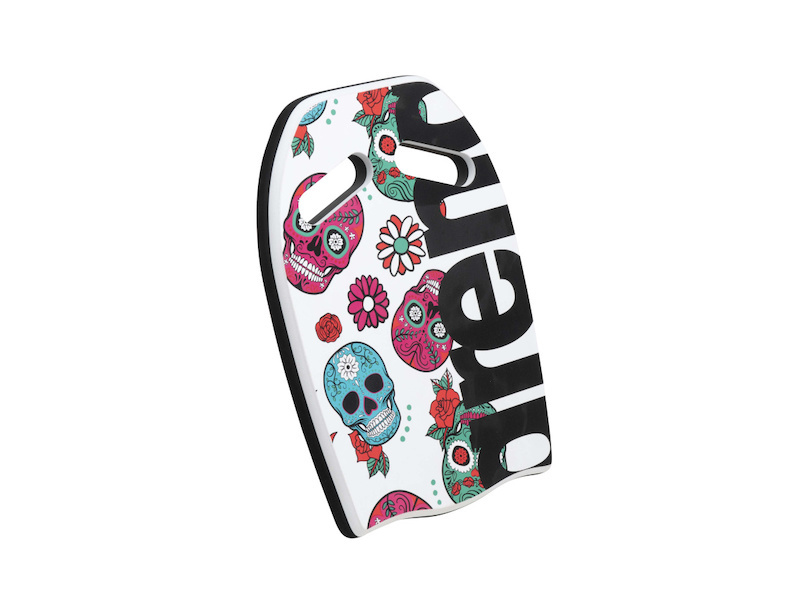How to Use a Kickboard to Get Serious Results
One of swimming’s most recognizable flotation devices, the humble kickboard, evokes fond memories of learning how to swim. But, these simple yet effective training aids go way beyond being used in swimming lessons and are just as relevant to competitive swimmers as they are to beginners. If you are in the market for a tool to improve your kicking technique or you just want to make your swim workouts more dynamic, learning how to use a kickboard is a step in the right direction.
By giving your swim training an extra dose of buoyancy, you can improve confidence in your weaker swim strokes. Using a kickboard for your freestyle swimming seems like the obvious choice, but they can also come in handy to achieve a stronger breaststroke and even backstroke. The kickboard is a classic tool that has stood the test of time, and it can still help with your swimming technique today.
In this article, we’ll be exploring the reasons to use a kickboard, lesser-known kickboard exercises, and how to use one correctly.
Why Use a Kickboard?

There’s a sea of pluses to using kickboards in your training sessions, from better body position to snorkel-like breathing. Here are some of the advantages from using a kickboard as a training aid.
Focus on Your Lower Body
Any iron-addicted gym-goer who’s worth their salt knows that skipping leg day is a huge no-no. Things are no different when it comes to swim training. Swimming is a full-body workout and, therefore, requires good strength and technique from every muscle.
By giving the upper body a bit of a break through the use of a kickboard, you are isolating your legs. This means they are doing a lot more work to propel you forward in the water, which will promote muscle growth and can help you hone in on the nuances of the flutter kick or your breaststroke kick.
Enjoy Consistent Breathing
A kickboard is similar to a swim snorkel in that it allows you to enjoy uninterrupted breathing. This means you can apply even more focus to the flutter kick.
More consistent and regulated breathing allows your muscle to get even more of the oxygenated blood that they crave. This means you can really put your legs through some gnarly training sessions, which can help with muscle growth and even weight loss.
You can even supplement this breathing with a swim snorkel, which will allow you to keep your head down for a more natural stroke.
Train Through Upper-Body Injuries
Getting injured is a horrible but practically inevitable part of training in any sport. An upper-body injury can be supplemented with a kickboard to keep you in the pool and from going stir crazy.
The pull phase of your freestyle puts a lot of strain on your shoulder. Using a kickboard to keep your upper body buoyant can allow your injury to recover while keeping you in the swimming pool. Plus, the endorphins released from exercise can boost to your mental wellbeing, so suddenly ending your training can be a blow to both your mental and physical health. Adjusting your training to be done with a kickboard can help you avoid disruptions to your training schedule.
Try Some Fresh Drills
When your training starts feeling stagnant, it’s time to mix it up. In sport, it’s natural to get bored and crave new activities, and swimming is no different. Using a kickboard opens up a new realm of drills you will never have tried if you haven’t used one before.
Using training aids in the swimming pool or in open-water adventures is a surefire way to blow off the cobwebs and can even teach you new skills.
Lesser-Known Kickboard Exercises

You can add a kickboard element to just about any drill out there, old and new. There’s more to just using a kickboard than adding some brutal leg-only laps to a drill though. Bring out your creative side with some of these kickboard exercises, which require you to think a little outside the box.
Grab the Bottom
This is the perfect exercise for improving your front crawl body position. Simply fully extend the kickboard in front of you while grabbing the bottom of the board.
Because of the full extension, this exercise will require you to have your head in the water, so you will have to rotate your head to take breaths. Or you can supplement this exercise with a swim snorkel so you can focus even more on that straight body position.
Hug Your Kickboard
The lesser-known stroke to use your kickboard with is the backstroke. This simple exercise can really help your backstroke flutter kick.
Hug your kickboard against your chest so that it is flush with your body. Slightly arch your back, and you’re good to go. You’re now putting all the work of the backstroke on your legs. This can help to improve strength and technique.
Push for the Burn
Who needs a gym when you’ve got the resistance of the water and your trusty kickboard? Kickboards are made of varying material types, but they all have one thing in common: buoyancy.
It won’t take you long to learn how to use a kickboard’s natural inclination to leave the water to add resistance. It’s very similar to strength training in the gym using free weights or dumbbells.
You can train the same muscles that a pushup works by performing a kickboard pushdown. Simply stand waist deep in the pool, and push your kickboard down with your hands spaced shoulder-width apart. Push until your arms are straight. Start with a set of 10 reps. You can add an additional board for more resistance or up your sets.
How to Use a Kickboard Safely
Getting in the water with a new training aid, fresh exercise ideas, and new drills can be a great way to bring life back to your swim workouts. But, like anything new in the world of exercise there is an element of risk if the proper precautions aren’t taken.
Avoid Neck Strain
When using your kickboard to give your arms a rest during breaststroke or freestyle, you can lift your head up, allowing for constant breathing. Not having to worry about your breathing technique is a nice luxury in a swim workout, just be careful not to do this for too long as it can result in neck strain.
Using a swim snorkel will allow you to swim using your kickboard for as long you like by keeping your head down. This saves your neck and will give you a more streamlined swim stroke.
Be Mindful of Your Dolphin Kick
With a little practice you can still perform a top-tier flip turn while keeping hold of your kickboard. This of course means there’s still an opportunity to perform a dolphin kick.
During the dolphin kick, some swimmers keep the upper body very stationary whereas others employ a little movement to motivate the dolphin kick. If you are part of the second camp, be aware that this is very difficult to emulate while using a kickboard and can lead to lower back pain.
Are Kickboards Still a Relevant Training Aid?

Kickboards are one of the quintessential swim training aids. You use them like training wheels in your developmental years, then as you get more serious about your swimming they become a tool that can help you mold the nuances of your stroke and gain the strength you desire. Not only are kickboards easy to use, they can improve strength, make workouts more dynamic, and most importantly, are relatively inexpensive.
If you are interested in getting a kickboard for yourself, you should check out arena’s selection, which has a good mix of style and function. When it comes to classic flat kickboards, we offer a plain style and a printed kickboard.
Alternatively, you may want to get a kickboard that doubles up as a pull buoy. This gives you the option to work only the upper body or only the lower body on the fly with just one piece of equipment. Check out the Pull Kick Floatation, Swim Keel, and Pullkick Pro.
Written by:
Thomas Board
Tom is an outdoor and adventure travel writer and full-time firefighter based in Leeds, UK. He spends his free time summiting the mountains of Wales and wild swimming in the lakes of Snowdonia all year round.







